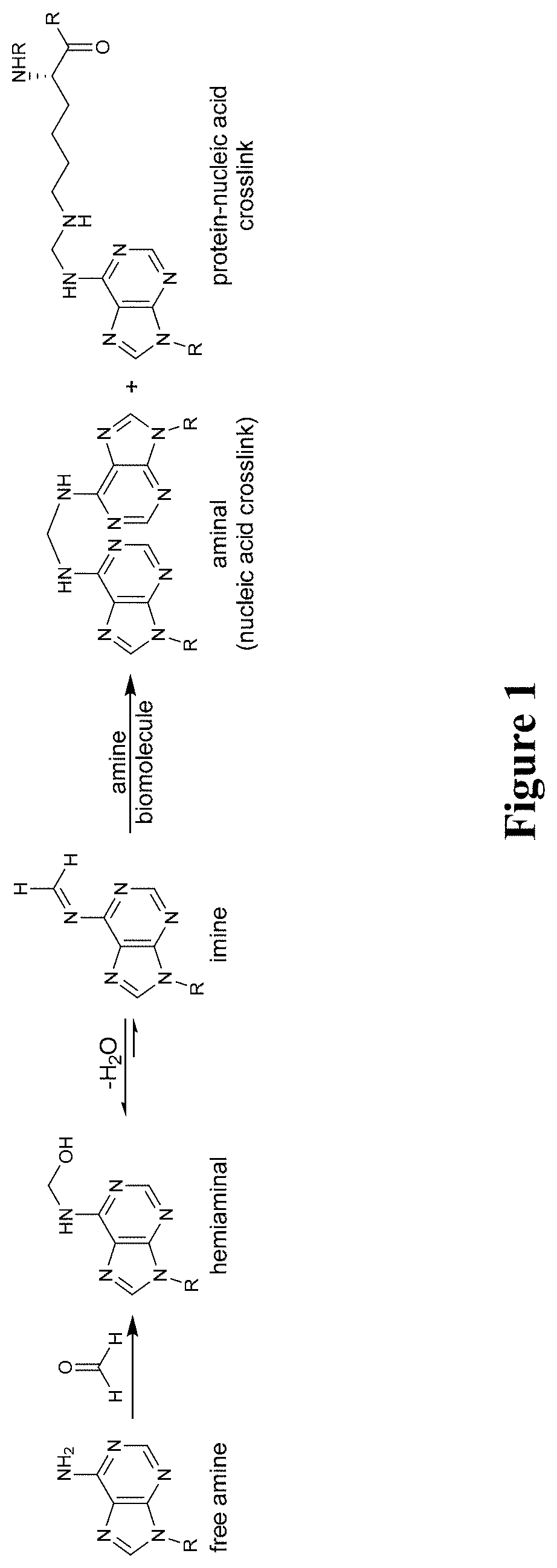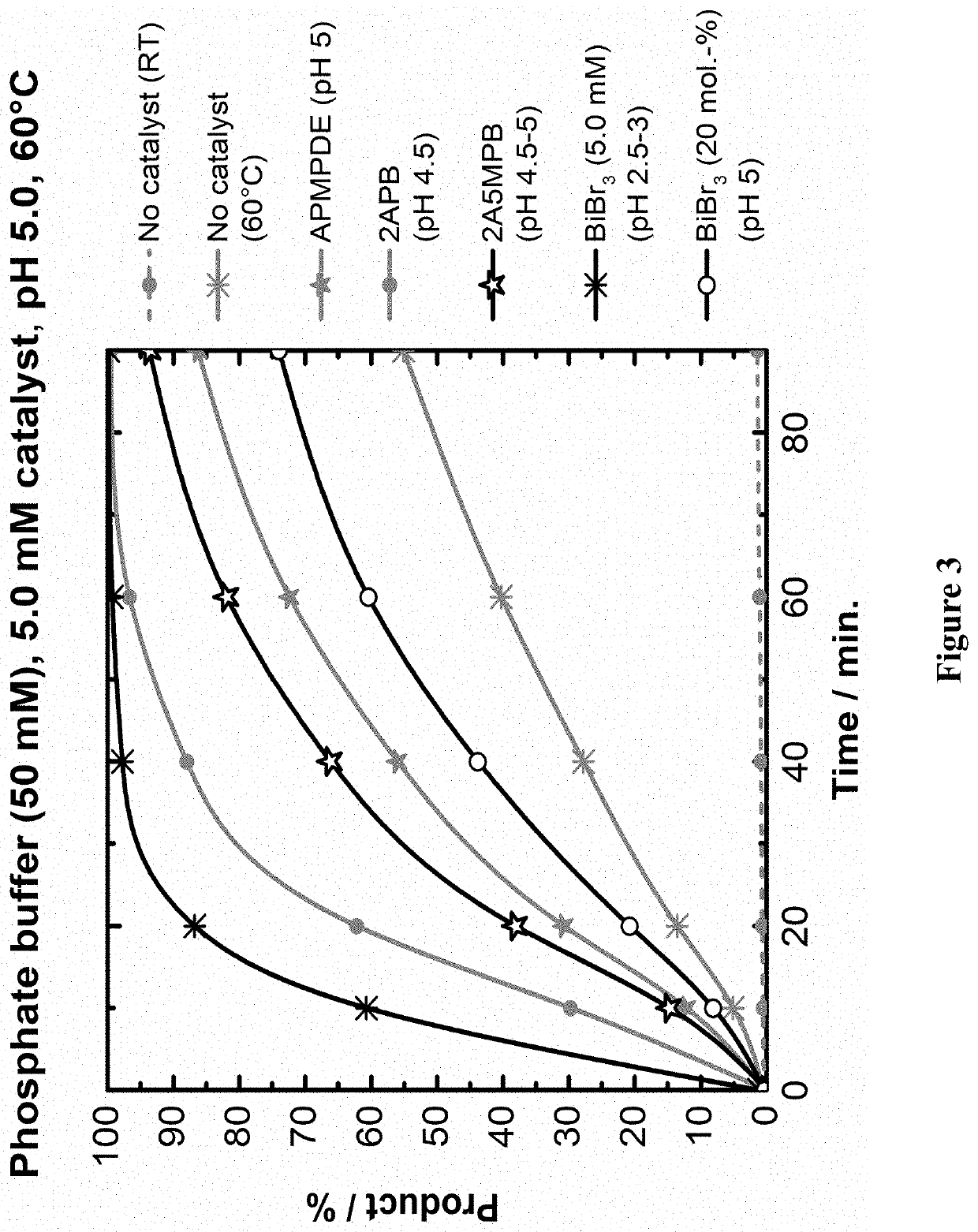Catalysts for reversing formaldehyde adducts and crosslinks
a formaldehyde and catalyst technology, applied in the field of catalysts for reversing formaldehyde adducts and crosslinks, can solve the problems of presenting challenges to the detection of various cellular components, pcr is generally poorly or not effective in analyzing nucleic acids in formaldehyde cross, and many biological components of the sample are poorly accessible or inaccessible for detection, quantification and characterization, etc., to achieve the effect of improving the accessibility of one or mor
- Summary
- Abstract
- Description
- Claims
- Application Information
AI Technical Summary
Benefits of technology
Problems solved by technology
Method used
Image
Examples
example
Example 1
[0063]This example illustrates the preparation and analysis of formaldehyde adducts of mononucleotides.
Materials and Reagents.
[0064]Deoxyadenosine monophosphate (dAMP), lithium perchlorate, and all organic catalysts were purchased from Sigma-Aldrich or VWR. Methanol-free 10% formaldehyde, EM grade was purchased from Thermo Fisher Scientific. Solvents and reagents were purchased from Sigma-Aldrich or VWR. The names, CAS numbers and Molecular Weights of the compounds (catalysts) are as follows:
Compound 1: (2-Amino-5-fluorophenyl)boronic acid; CAS number 1040400-87-00; Molecular Weight 154.93.
Compound 2: 2-Aminophenylboronic acid; CAS number 5570-18-3 / 863753-30-4 (HCI); Molecular Weight 173.40.
Compound 3: (2-Amino-5-methylphenyl)boronic acid; CAS number 948592-72-1; Molecular Weight 150.97.
Compound 4: 1,3-Dihydro-1-hydroxy-2,1-benzoxaborol-7-amine; CAS number 947165-27-7, Molecular Weight 148.96.
Compound 5: 3,4-Dihydro-1-hydroxy-1H-2,1-benzoxaborin-7-amine; CAS number N / A; Mol...
example 2
[0073]This example illustrates reversal of cross-linking chemistry of the dAMP dimer with catalysts.
[0074]Reverse crosslinking of the methylene-bis-dAMP dimer (as shown in FIG. 2) were monitored by HPLC. Reactions were carried out on in 50 mM phosphate buffer, pH 5.0 at 60° C. dAMP dimer at 1.0 mM concentration was mixed with either no catalyst or with 5.0 mM concentration of Compounds 2, 3, 6, and 7. For each reaction mixture, an aliquot (10 μl) was taken at 10 minutes, 20 minutes, 40 minutes, 60 minutes and 90 minutes. FIG. 3 shows the results of this experiment and demonstrated that all the tested catalysts were able to reverse cross-linking (shown as % of dAMP produced) at rates that are much faster than when no catalyst was added.
PUM
| Property | Measurement | Unit |
|---|---|---|
| temperature | aaaaa | aaaaa |
| pKa | aaaaa | aaaaa |
| temperature | aaaaa | aaaaa |
Abstract
Description
Claims
Application Information
 Login to View More
Login to View More - R&D
- Intellectual Property
- Life Sciences
- Materials
- Tech Scout
- Unparalleled Data Quality
- Higher Quality Content
- 60% Fewer Hallucinations
Browse by: Latest US Patents, China's latest patents, Technical Efficacy Thesaurus, Application Domain, Technology Topic, Popular Technical Reports.
© 2025 PatSnap. All rights reserved.Legal|Privacy policy|Modern Slavery Act Transparency Statement|Sitemap|About US| Contact US: help@patsnap.com



